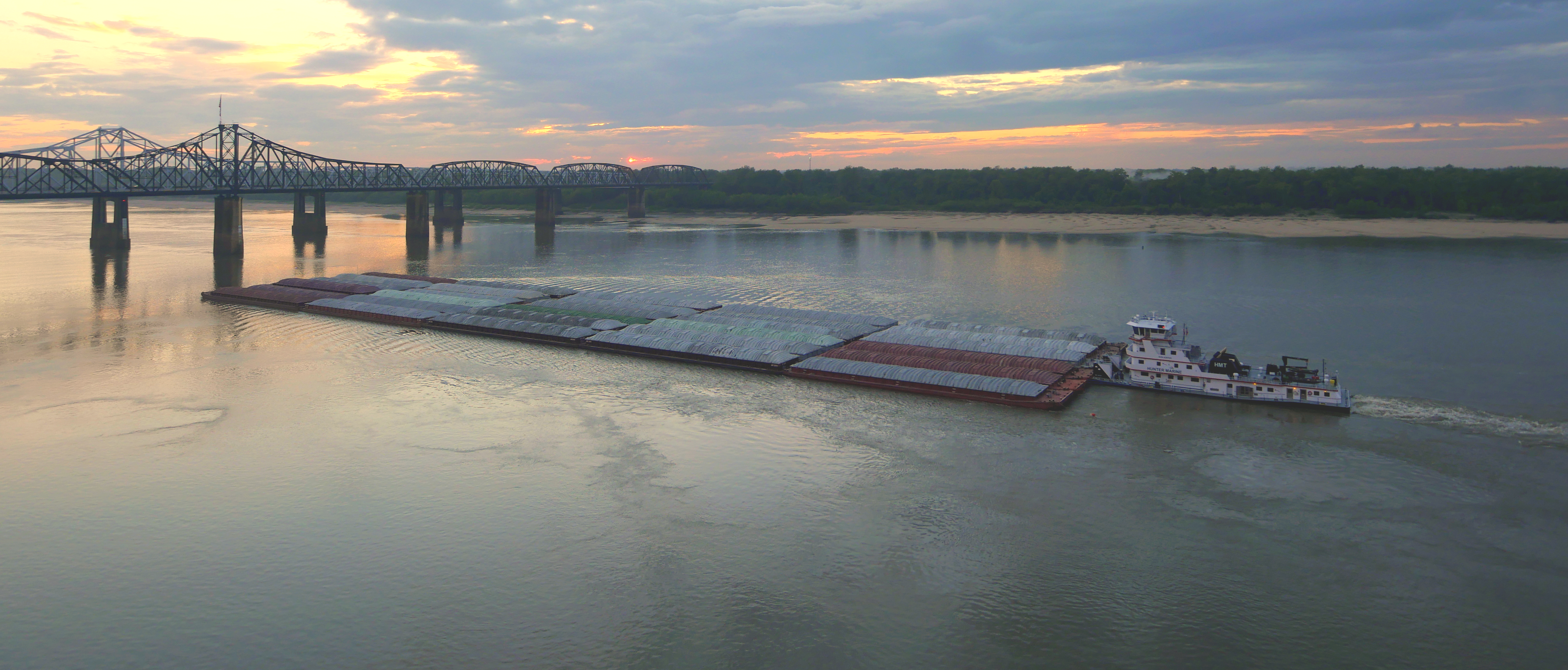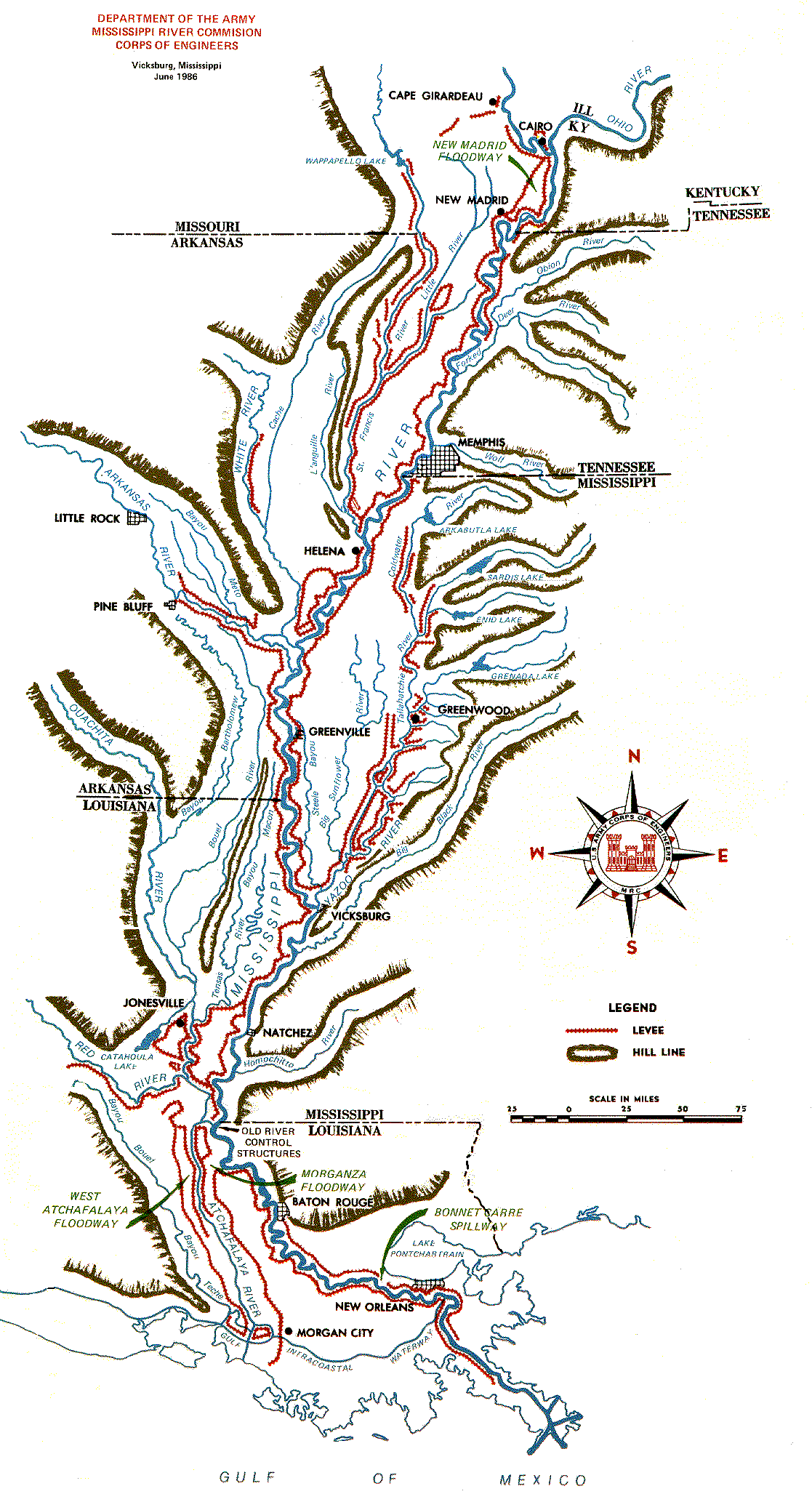Lower Mississippi River on:
[Wikipedia]
[Google]
[Amazon]
 The Lower Mississippi River is the portion of the
The Lower Mississippi River is the portion of the


 On the lower Mississippi, from Baton Rouge to the Gulf, the navigation depth is 45 feet, allowing for container ships and cruise ships to dock at the
On the lower Mississippi, from Baton Rouge to the Gulf, the navigation depth is 45 feet, allowing for container ships and cruise ships to dock at the 
 The Lower Mississippi River is the portion of the
The Lower Mississippi River is the portion of the Mississippi River
The Mississippi River is the List of longest rivers of the United States (by main stem), second-longest river and chief river of the second-largest Drainage system (geomorphology), drainage system in North America, second only to the Hudson B ...
downstream of Cairo
Cairo ( ; ar, القاهرة, al-Qāhirah, ) is the capital of Egypt and its largest city, home to 10 million people. It is also part of the largest urban agglomeration in Africa, the Arab world and the Middle East: The Greater Cairo metr ...
, Illinois
Illinois ( ) is a state in the Midwestern United States. Its largest metropolitan areas include the Chicago metropolitan area, and the Metro East section, of Greater St. Louis. Other smaller metropolitan areas include, Peoria and Rock ...
. From the confluence
In geography, a confluence (also: ''conflux'') occurs where two or more flowing bodies of water join to form a single channel. A confluence can occur in several configurations: at the point where a tributary joins a larger river (main stem); o ...
of the Ohio River
The Ohio River is a long river in the United States. It is located at the boundary of the Midwestern and Southern United States, flowing southwesterly from western Pennsylvania to its mouth on the Mississippi River at the southern tip of ...
and Upper Mississippi River
The Upper Mississippi River is the portion of the Mississippi River upstream of St. Louis, Missouri, United States, at the confluence of its main tributary, the Missouri River.
History
In terms of geologic and hydrographic history, the Upper ...
at Cairo, the Lower flows just under 1000 miles (1600 km) to the Gulf of Mexico
The Gulf of Mexico ( es, Golfo de México) is an ocean basin and a marginal sea of the Atlantic Ocean, largely surrounded by the North American continent. It is bounded on the northeast, north and northwest by the Gulf Coast of the United ...
. It is the most heavily travelled component of the Mississippi River System.
Structures
Unlike on the upper rivers, there are no locks or dams on the Lower Mississippi. The river is, however, constrained by levees anddikes
Dyke (UK) or dike (US) may refer to:
General uses
* Dyke (slang), a slang word meaning "lesbian"
* Dike (geology), a subvertical sheet-like intrusion of magma or sediment
* Dike (mythology), ''Dikē'', the Greek goddess of moral justice
* Dikes ...
to control flooding and secure a navigation channel for barges
Barge nowadays generally refers to a flat-bottomed inland waterway vessel which does not have its own means of mechanical propulsion. The first modern barges were pulled by tugs, but nowadays most are pushed by pusher boats, or other vessels. ...
. The Old River Control Structure, the Bonnet Carré Spillway
The Bonnet Carré Spillway is a flood control operation in the Lower Mississippi Valley. Located in St. Charles Parish, Louisiana, about west of New Orleans, it allows floodwaters from the Mississippi River to flow into Lake Pontchartrain and ...
, the Mississippi River – Gulf Outlet Canal and other man-made structures on the lower reaches of the river seek to manipulate the flow of water in the vicinity of .
History
The political and engineering focus in the 20th century was to separate the Lower Mississippi River from itsfloodplain
A floodplain or flood plain or bottomlands is an area of land adjacent to a river which stretches from the banks of its channel to the base of the enclosing valley walls, and which experiences flooding during periods of high discharge.Goudi ...
. Levees and channelization—along with substantial loss of bottomland forests to agriculture in the alluvial valley
Alluvium (from Latin ''alluvius'', from ''alluere'' 'to wash against') is loose clay, silt, sand, or gravel that has been deposited by running water in a stream bed, on a floodplain, in an alluvial fan or beach, or in similar settings. Alluv ...
—have resulted in a loss of wildlife and fish habitat, decreased water quality, and an expansion of the hypoxic zone in the Gulf of Mexico
The Gulf of Mexico ( es, Golfo de México) is an ocean basin and a marginal sea of the Atlantic Ocean, largely surrounded by the North American continent. It is bounded on the northeast, north and northwest by the Gulf Coast of the United ...
. Agricultural runoff
Runoff, run-off or RUNOFF may refer to:
* RUNOFF, the first computer text-formatting program
* Runoff or run-off, another name for bleed, printing that lies beyond the edges to which a printed sheet is trimmed
* Runoff or run-off, a stock marke ...
has resulted in increased turbidity
Turbidity is the cloudiness or haziness of a fluid caused by large numbers of individual particles that are generally invisible to the naked eye, similar to smoke in air. The measurement of turbidity is a key test of water quality.
Fluids ...
, silt
Silt is granular material of a size between sand and clay and composed mostly of broken grains of quartz. Silt may occur as a soil (often mixed with sand or clay) or as sediment mixed in suspension with water. Silt usually has a floury feel ...
ation, pollution from pesticides
Pesticides are substances that are meant to control pests. This includes herbicide, insecticide, nematicide, molluscicide, piscicide, avicide, rodenticide, bactericide, insect repellent, animal repellent, microbicide, fungicide, and la ...
, toxicity
Toxicity is the degree to which a chemical substance or a particular mixture of substances can damage an organism. Toxicity can refer to the effect on a whole organism, such as an animal, bacterium, or plant, as well as the effect on a subs ...
to aquatic organisms, oxygen depletion and eutrophication
Eutrophication is the process by which an entire body of water, or parts of it, becomes progressively enriched with minerals and nutrients, particularly nitrogen and phosphorus. It has also been defined as "nutrient-induced increase in phyt ...
.
Navigation
Channel depth of 9 feet is maintained by the Corps of Engineers from St. Louis, Missouri toBaton Rouge, Louisiana
Baton Rouge ( ; ) is a city in and the List of capitals in the United States, capital of the U.S. state of Louisiana. Located the eastern bank of the Mississippi River, it is the county seat, parish seat of East Baton Rouge Parish, Louisiana, E ...
.


 On the lower Mississippi, from Baton Rouge to the Gulf, the navigation depth is 45 feet, allowing for container ships and cruise ships to dock at the
On the lower Mississippi, from Baton Rouge to the Gulf, the navigation depth is 45 feet, allowing for container ships and cruise ships to dock at the Port of New Orleans
The Port of New Orleans is an embarkation port for cruise passengers. It is also Louisiana’s only international container port.
The port generates $100 million in revenue annually through its four lines of business – cargo (46%), rail (31% ...
and bulk cargo ships shorter than 150 foot air draft to fit under the Huey P. Long Bridge and traverse the Mississippi to Baton Rouge. There is a feasibility study to dredge this portion of the river to 50 feet to allow New Panamax
Panamax and New Panamax (or Neopanamax) are terms for the size limits for ships travelling through the Panama Canal. The limits and requirements are published by the Panama Canal Authority (ACP) in a publication titled "Vessel Requirements". ...
ship depths.

See also
* List of crossings of the Lower Mississippi River * 2011 Mississippi River floods *Upper Mississippi River
The Upper Mississippi River is the portion of the Mississippi River upstream of St. Louis, Missouri, United States, at the confluence of its main tributary, the Missouri River.
History
In terms of geologic and hydrographic history, the Upper ...
References
{{coord, 33, 45, N, 89, 45, W, scale:2500000, display=title * Freshwater ecoregions Ecoregions of the United States